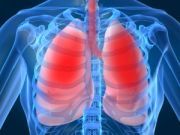Article
Bronchial Thermoplasty Offers Long-Term Benefits for Some Refractory Asthma Patients
Author(s):
Guidelines to be released later this year by the American Thoracic Society (ATS) and the European Respiratory Society (ERS) suggest that bronchial thermoplasty may be an effective treatment for moderate to severe asthma patients, for whom inhaled corticosteroids have provided unsatisfactory results.

Guidelines to be released later this year by the American Thoracic Society (ATS) and the European Respiratory Society (ERS) suggest that bronchial thermoplasty may be an effective treatment for moderate to severe asthma patients, for whom inhaled corticosteroids have provided unsatisfactory results, according to a presentation Wednesday at CHEST 2013, the annual conference of the American College of Chest Physicians.
“The cumulative experience of 13 years allows us to say whether bronchial thermoplasty will be effective in patients with severe asthma,” said Mario Castro, MD, MPH, professor of medicine and pediatrics at Washington University in St. Louis.
The treatment has been associated with a reduction in lung defect scores from 33% to 8%, he noted. A May 2013 article in CHEST found that the sputum eosinophilia test is the best predictor of change in lung defect score from the procedure.
While patients should try other therapies before a physician has recourse to the procedure, thermoplasty has been associated with an 18% reduction in inhaled corticosteroid dose, and other benefits, with no loss of smooth muscle, said Castro during his oral presentation titled, “Bronchial Thermoplasty in Asthma: When to Use and What Are the Data?”
While the treatment often coincides with a transient worsening of asthma, that typically disappears within a week, and the benefits persist out to five years, added Castro, who noted that the therapy is not thought appropriate for repeat procedures. “If you have a non-responder five years out, smooth muscle is probably not the problem,” he explained. The procedure is not a bronchodilator, but prevents bronchoconstriction, he explained.
A number of studies have quantified the benefits of thermoplasty, such as the AIR 1 study, which found that the therapy reduced exacerbations among those with moderate to severe asthma by 10 exacerbations per year, Castro said.
Follow-up studies, such as AIR 2 and the AIR extension trial, also found persistent benefits, he noted. AIR 2 was a study of 190 patients who received bronchial thermoplasty, with a control group of 98 patients, who received sham procedures. An improvement in quality of life scores, by 79% in the treatment group, compared to 64% in those who received the sham procedure, persisted at 12 months, Castro said.
AIR 2 looked at severe exacerbations, while the AIR extension trial only looked at the group that received treatment, and found an 84% reduction in hospital visits, as well as a 66% reduction in work days lost, according to Castro.
Bronchial thermoplasty is an FDA-approved treatment in which heat at 65 degrees Celsius is delivered through a catheter for 10 seconds. “Typically, we treat either the left or right lobe, then wait three weeks and return to treat the other lobe and the upper lobes,” Castro said. However, the therapy should only be used on adults, without pacemakers, and with no known sensitivities, he added.
However, before administering bronchial thermoplasty, the treating physician should pause to consider etiology in the treatment-refractory asthma patient. “First, step back and think about whether these patients are really asthmatics,” he advised. “Do they have therapy-induced co-morbidities related to steroids, or is there an adherence issue? Have environmental and occupational factors been addressed?”
The physician should also conduct CBC, spirometry and lung volume tests, an allergy skin test, and an oxygen assessment with a six-minute walk, Castro recommended.





